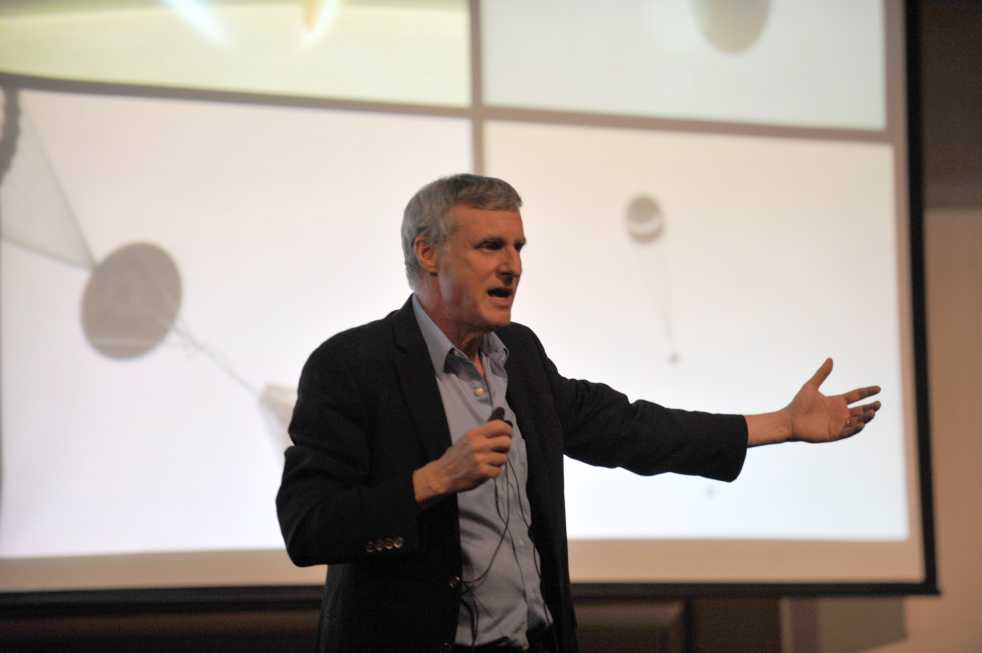One of the pioneers on the frontier of exploration came to Tech this past Monday: Dr. Steven Squyres, Principal Scientific Investigator of the Mars Exploration Rover Mission. He was invited as part of the Institutes’s Center for Space Technology and Research distinguished lecture series to share his experience performing the “first-ever mountaineering on Mars.” Though Dr. Squyres touched on points of engineering and finance, he primarily came as a storyteller, describing the emotional peaks and valleys of the Mars rovers’ journeys.
The story began with the design of the rover and the numerous challenges that entailed. With photos and video demonstrations, Dr. Squyres walked through different aspects of the construction process. He touched on the nerve-racking difficulty and frustration of achieving certain goals, such as the design of the parachute that was completed mere months before the craft was to take off.
He stressed the importance of every part functioning without fail as he showed the “origami in reverse” that would put the rover in the proper position once it had landed. The treasure waiting at the end of the rovers’ long journey was humble, simple rock.
“You can read the story written in those rocks, and you can understand what Mars was like in the distant past,” Dr.
Squyres said.
The goal of the mission was to find signs that Mars had once been a more watery environment. Armed with dual spectrometers, the rovers were well-equipped to find such evidence.
The mission itself put two rovers, Spirit and Opportunity, on the Martian surface. The first of the pair, Spirit, set off on a shaky start: the minerals near the landing site were too recent to bear any evidence of possible bodies of water in Mars’s past.
The rover thus undertook an extended “sprint” over several months to a nearby set of hills. There, it discovered evidence that “pointed to a watery history” for Mars. The rover eventually got stuck on the Martian terrain and, before long, ceased to communicate with Earth.
The landing of the second rover, Opportunity, was a tremendous stroke of good luck. Thanks to a gust of wind, the rover landed directly in a crater where it was able to examine exposed rock, a feat Dr. Squyres compared to “Tiger Woods on his best day.”
They discovered a number of hematite “blueberries,” which also provide evidence for the past existence of liquid water on Mars. Opportunity then traveled to a crater named Victoria, named for the single ship that returned from Magellan’s ill-fated expedition—a fitting comparison given how battered the rovers are now. Opportunity has traveled over 26.2 miles and still functions today.
Towards the end of his talk, Dr. Squyres discussed the element of inspiration in space travel. He noted that he grew up in a generation that had watched with awe at lunar exploration missions.
“We don’t put the libraries in the schools, we don’t put the textbooks in the libraries, we put the knowledge in the textbooks,” Dr. Squyres said.
Despite the financial expenditure, he insisted on the necessity of the mission as enriching to the human spirit.
